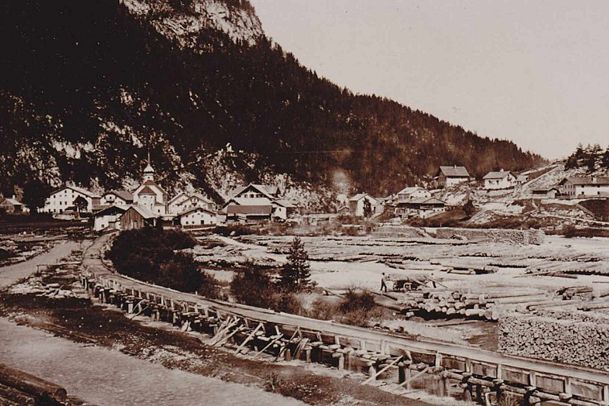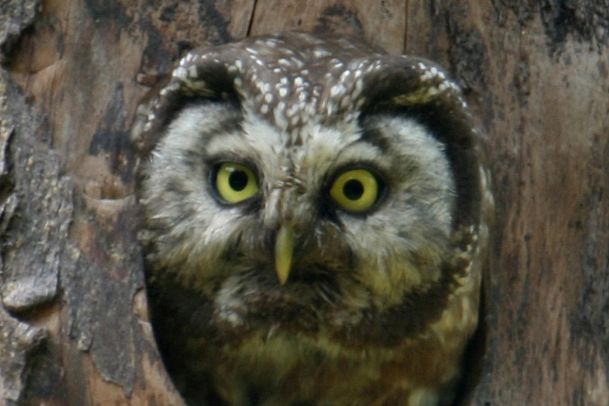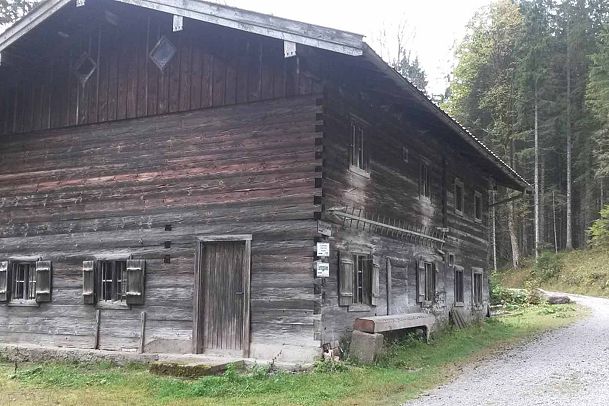Press release, February 2017
From the "Ways of Wood"



On the common border of Bavaria and Tyrol, a new project is dedicated to cultural history and natural diversity.
Scharnitz/Schliersee. There is still not much to see of the "Ways of Wood". Very few visitors have any idea of the stories of the areas through which they lead their hiking boots or mountain bikes when they are out and about in the Karwendel or the Mangfall Mountains. But that is about to change. As part of an INTERREG project, the Karwendel Nature Park, the municipality of Scharnitz, the Bavarian State Ministry for the Environment and Consumer Protection and the Markus Wasmeier Open-Air Museum in Schliersee are dedicating themselves to the touristic preparation of the "Ways of Wood".
A cultural history of wood use
First of all, this means presenting the history of timber use, which was the primary economic activity of the entire Northern Alps from about the late Middle Ages until well into the last century. Apart from trift barriers and a few traces in the terrain, this history has become largely invisible today. Even the "Länd" in Scharnitz, currently a large visitor car park at the "gateway to the Karwendel", does not show the origin of its name. Not yet, because here, as well as in the area of the Wasmeier Open-Air Museum, a former winter home of the lumberjacks is being reconstructed. In Bavaria as in Tyrol, the two lumbermen's huts will be used as a museum to show interested visitors the life of their former inhabitants. "The project is a unique opportunity for Scharnitz," says a delighted Isabella Blaha, the town mayor. Markus Wasmeier, founder of the open-air museum, is also convinced: "With this project we can highlight special features of the whole region!" By involving interested locals in the research, the exhibitions should also have a strong local connection.
The natural diversity of mountain forests and wild rivers
It is not only the history of use that is worth telling, alpine nature also has amazing stories to tell. Today, the "paths of wood" are also associated with such special habitats as near-natural mountain forests and wild rivers. "Many insect species need large amounts of deadwood in their habitat. They and the birds that live on them, such as the rare white-backed woodpecker, are therefore only found in very near-natural forests," knows Hermann Sonntag, Managing Director of the Karwendel Nature Park. The Karwendel is not only Austria's largest nature park, but as a Natura 2000 site it is also an important protected area throughout Europe – just like the Mangfall Mountains on the Bavarian side, which lie directly to the east. This is financed by the Bavarian Nature Conservation Fund together with the district of Miesbach and looked after by the area supervisor Marco Müller. This is why these natural jewels play a central role not only in the exhibitions, where visitors can embark on a journey through time. The exhibitions are accompanied by excursions and nature tours that give people a close-up view of the background. Bavarian Environment Minister Ulrike Scharf emphasises: "Historical knowledge and cultural understanding about the influences of humans on nature and landscape are important prerequisites for our efforts to protect nature and landscape today. That is why the Ministry is involved in this project."
Anchoring the " Ways of Wood" in the area
In addition to the two woodworker museums in the Bavarian-Tyrolean border area, the aim of the INTERREG project is to highlight the thematic complex in the entire region. Following the "paths of wood", a joint tourism concept is to be developed, for example, with rafting and saltworks museums downstream. Anchoring nature-based tourism in the respective tourism associations is also an important issue. The Region Seefeld is already paying for its own share of the Tyrolean side of the project.
Important key data on the project
- Full project title: "Ways of wood – cultural history and natural diversity".
- Förderprogramm: INTERREG V-A Österreich-Bayern 2014-2020, Europäischer Fonds für Regionale Entwicklung (EFRE)
- Project duration: October 2016 until October 2019
- Project scope: € 1.7 million, of which 75% funding
- Project partners Tyrol: Karwendel Nature Park (lead partner), municipality of Scharnitz
- Project partners Bavaria: State Ministry for the Environment and Consumer Protection, Markus Wasmeier Open-Air Museum Schliersee
- Planned project contents: Removal and reconstruction of historic woodworkers' huts on the Bavarian and Tyrolean side, didactic preparation of the thematic blocks: "The life of the woodworkers", "Wood utilization once and now" and "Preservation of biodiversity in the Alpine region with special consideration of Natura 2000", guided tours/temporary exhibitions, inclusion of the outdoor area, implementation of 2 expert conferences "Didactic preparation of the topic of forest ecosystems/wood utilization" in the (pre-)Alpine region and the target group-specific advertising of relevant offers.
Further information:
Ways of Wood
The project